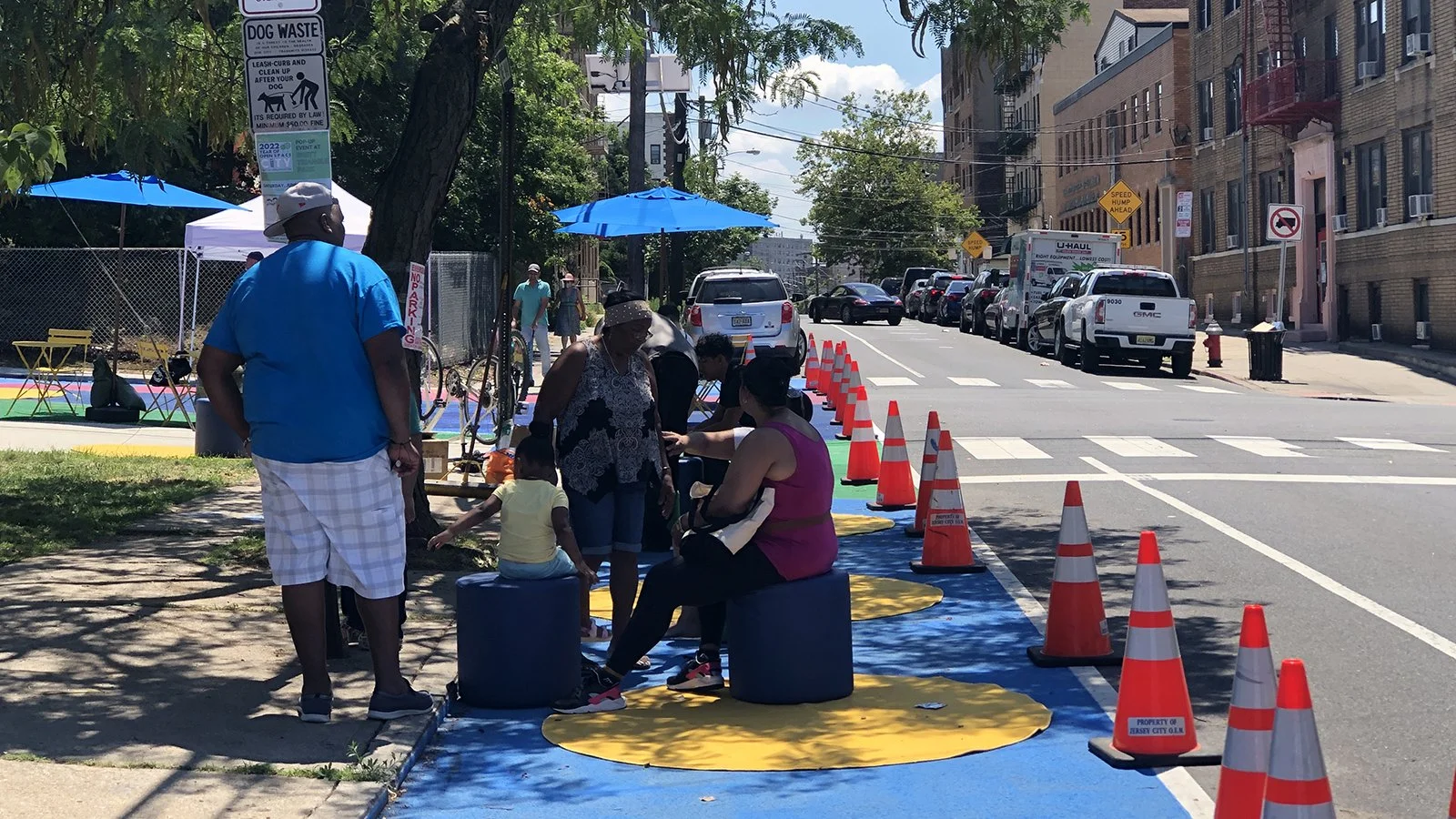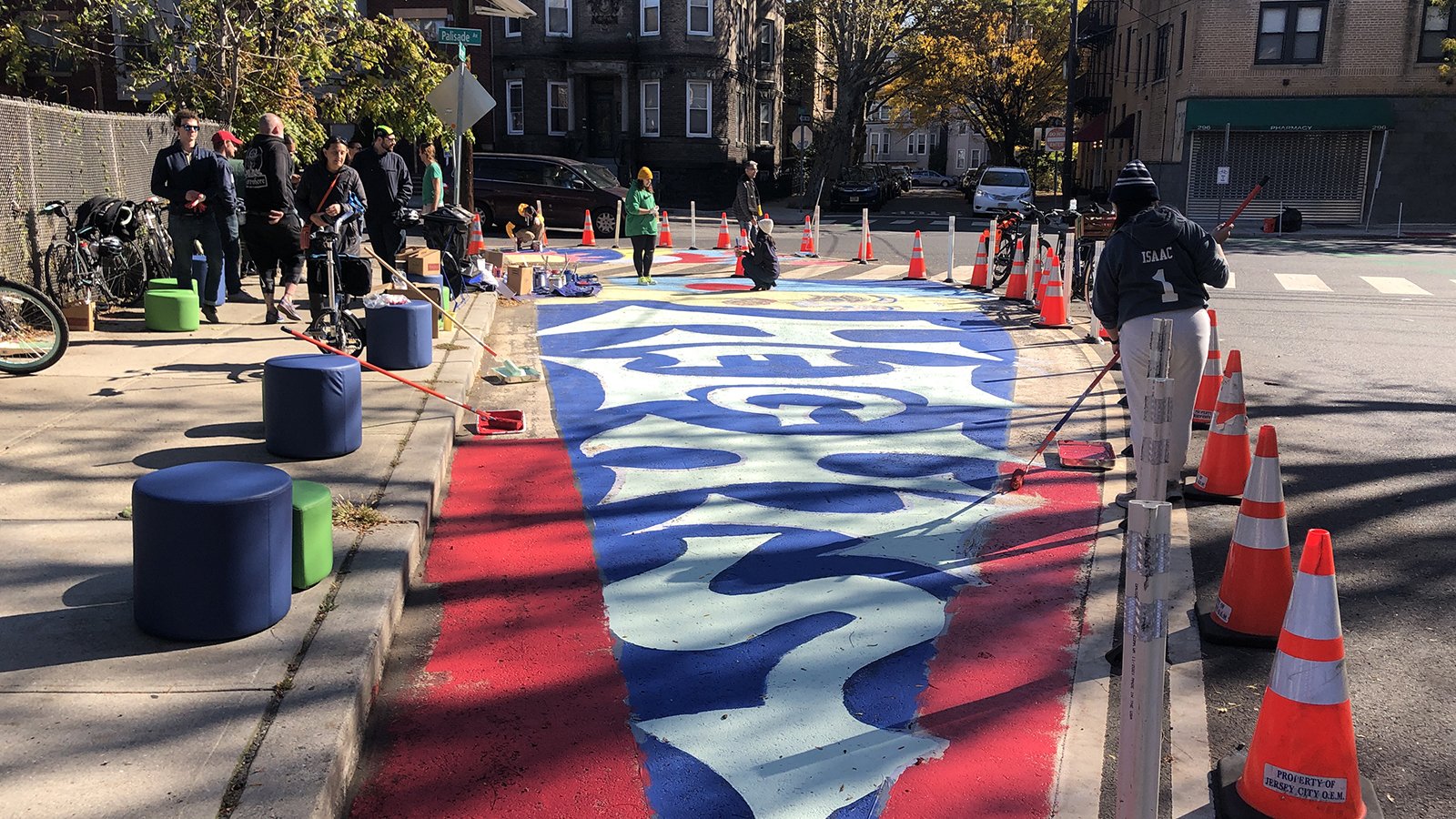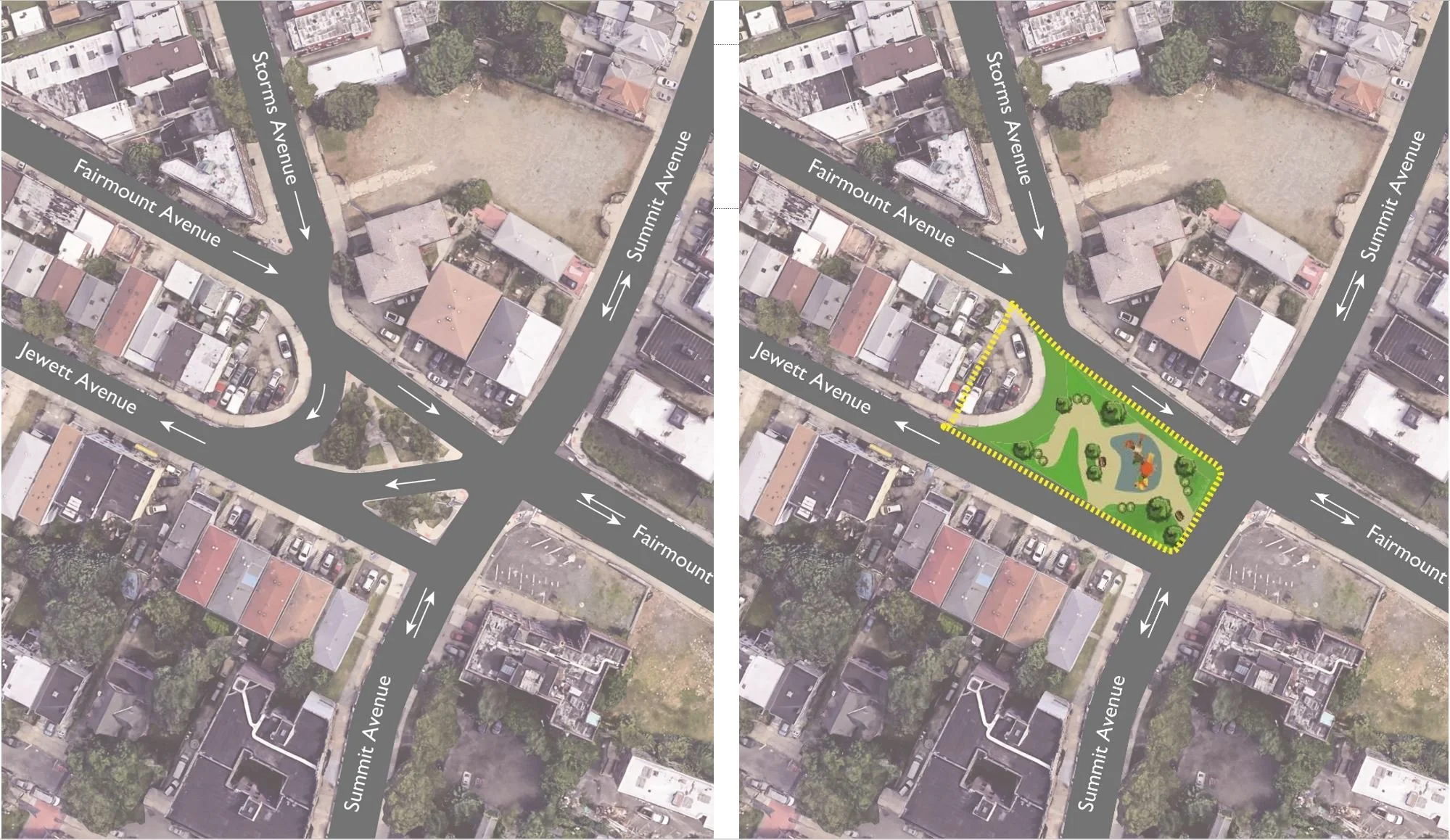Jersey City Achieved Zero Traffic Deaths on Its Streets. Here’s How They Did It.
(Source: Street Plans.)
Jersey City made headlines in 2022 when it accomplished what Vision Zero advocates have been championing for years: zero traffic deaths on city streets. For Mike Lydon of Street Plans, one of the city's longtime consultants, reaching zero was less a matter of luck and more likely evidence that the city’s approach is working. That approach involved giving tactical urbanism a chance.
When Street Plans was first recruited by Jersey City in 2016, the former proposed bringing conversations about the streets to the streets. Street Plans convinced the city to permit community engagement by means of walking tours, pop-up parklets, and "tactical interventions." For Lydon, a celebrated urban planner and the firm’s co-founder, the advantage of this method was that conversations about street use and safety were thrust into the physical realm, rather than just the theoretical one. As a result, the public had the opportunity to talk about how to make changes, rather than whether to pursue them, at all.
Additionally, rather than concentrate pedestrian safety improvements in a single area downtown, Street Plans and Jersey City pursued interventions across six corridors, one in each of Jersey City’s six wards. In doing so, the city not only built trust across different constituencies, but was able to experiment with local calibration, rather than commit to a “one-size fits all” approach.
The speed of the process—two to three months from pop-up parklets to paint on the ground—showcased not only how doable these changes are, but how quickly they can be done. According to city staff, the efficiency kindled an appetite for more amongst the public.
(Source: Street Plans.)
While tactical urbanism is intended to be quick and inexpensive, Lydon couldn’t help but attribute the speed of Jersey City’s transformation to committed local leadership. “There was no bureaucracy to overcome because the city was willing to experiment,” he said. “Their openness [to tactical urbanism] was refreshing and in 2016 especially, it was practically unheard of.”
In fact, the atypical embrace of experimentation was largely pioneered by the city’s current Director of Infrastructure, Barkha Patel, and the explicit support of Mayor Steven Fulop. Nearly seven years ago, Fulop and Patel confronted the paradox of having one of the densest cities with some of the highest transit ridership in the tri-state area be one where traffic fatalities are so commonplace. With transit outside of Jersey City’s discretion (the lines that serve the city are operated by a mix of state, bi-state, or private agencies), they looked to what they could do, rather than lament what they couldn’t.
(Source: Street Plans.)
“At that point, we knew we couldn’t just throw our hands up in the air and say, ‘We can’t do anything!’” Patel explained. “That’s when we said, ‘Well, what we do have in our control is city streets,’ and that’s where we’ve decided to start.”
For example, when Patel was the Senior Transportation Planner, she proposed incorporating on-the-ground testing into lengthy transportation studies. This meant that rather than wait for studies to conclude—often a year or more—before pursuing changes, the city experimented with the ideas in order to better inform the recommendations that would ultimately emerge when the studies finished.
Part of her motivation for doing so was to ensure people who have been lobbying for safety improvements on heavily trafficked corridors felt heard. “A year is a really long time from when you make a commitment to a community that you are going to improve some aspect of the pedestrian environment,” she told the Engaging Local Government Leaders podcast back in March.
Thus, Jersey City became a laboratory. Embracing an iterative process—one wherein mistakes aren’t avoided but learned from— made the key difference. Patel describes utilizing whatever materials were lying around for semi-permanent interventions like bump-outs, curb extensions, delineators, bike lanes, and so on. The public’s response was encouraging. ”We started in areas where there was the most demand for this kind of intervention and soon after, residents in other neighborhoods started to ask for the same changes,” Patel said. “I see that as a good problem to have.”
Jersey City Infrastructure Director Barkha Patel, whose cooperation and drive was essential to bring Jersey City to where it is today. (Source: Jen Brown/City of Jersey City.)
Now, having been able to boast zero traffic deaths in 2022, Jersey City’s techniques serve as inspiration nationwide. “A lot more people are looking to local government as the place where you can have the most influence,” Patel observed in the aforementioned podcast.
For cities not staffed by champions of the tactical approach, however, Patel offers some ideas for advocates. For one, she recommends reaching out to cities that have made the changes you want to see in yours and asking whether someone would be willing to share insights with your local government.
Jersey City has become this partner for cities across the country. While no two cities are the same, Patel underscores the value in connecting with city staff and elected officials who’ve already navigated the liabilities, code, and other complexities in municipal governance that often inhibit cities from accelerating street safety.
Fairmount Triangle before (left) and after (right). (Source: Street Plans.)
Lydon recommends looking toward your city’s own promises. “You can apply this methodology to public space, transportation, private land, really anything,” Lydon suggested. “If you, as a city, are interested, then [tactical urbanism] is an inexpensive and quick way to tackle the goals you’ve probably already enshrined in your comprehensive plan.”
In the end, Jersey City doesn’t need to be an anomaly. It confronted the reality of traffic deaths occurring on city streets and decided it’s not enough to say that it’s unacceptable, but that action needs to be taken immediately. For Lydon, a lot of it boils down to the will to change. “Change is always scary,” he admitted. “However, continuing the way we have been has resulted in far too many deaths on our streets and that alone should catalyze the will to experiment.”









On this episode of the Strong Towns Podcast, Chuck discusses safe streets advocacy with Amy Cohen, the co-founder and president of Families for Safe Streets.